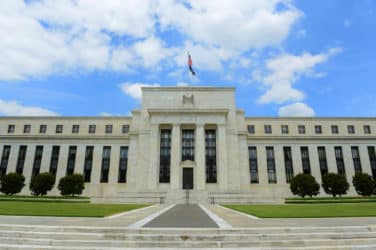Wednesday’s expected quarter-point interest-rate increase by the Federal Open Market Committee likely will stir up market volatility a bit, but not more than if the FMOC decides to dial back the expected increase or increase it beyond the current consensus number, according to some market participants.
“There is going to be a gap move after the announcement,” noted Ilya Feygin, a managing director at WallachBeth Capital. “If the statement is very reassuring, there will be a gap higher in equities. I’m not exactly what its magnitude will be because it has been front-run on Tuesday. I think people are coming to this conclusion…and that is why things are so strong, in everything from the S&P to the high yields to emerging markets to Europe.”
However, Feygin estimates that the situation will be relatively short-lived as market participants have positioned themselves extremely conservatively and reduced their market exposure in the event of bad news.
“That’s the reason the market popped a fair amount on Tuesday,” he added. “If the Fed raises rates higher than expected, but delivers a reassuring statement, the equity market would go even higher. I’m not sure by how much, but the equities market would like that.”
The key to prevent higher than expected volatility, according to Feygin, is for the FOMC to provide the market with forward guidance that assures the market that the U.S. economy is strengthening, and that any subsequent rate hikes will be very gradual.
“This is exactly the problem they had in September, when the Fed was criticized for not giving the market confidence,” he explained. “It created a bad reaction when they decided not to tighten rates. The market suspected it was because the Fed knew something that the market did not: That the economy was still very weak and that there were other systemic risks in the background, which there were.”
Feygin does not believe that Wednesday’s expected hike will a lingering long-term effect as the forward rates have already risen and and have it priced in.
“What is more important is how much the overall dollar liquidity is provided into the system,” he added. “That has been eroding ever since we pretty much stopped purchases about a year ago and that has increased volatility. As soon as you reduce the future projected size of the Fed’s balance sheet, you reduce liquidity to the system. That’s already happened and I think that has been weighing on the markets for the past year.”
Featured image via Dollar Photo Club






